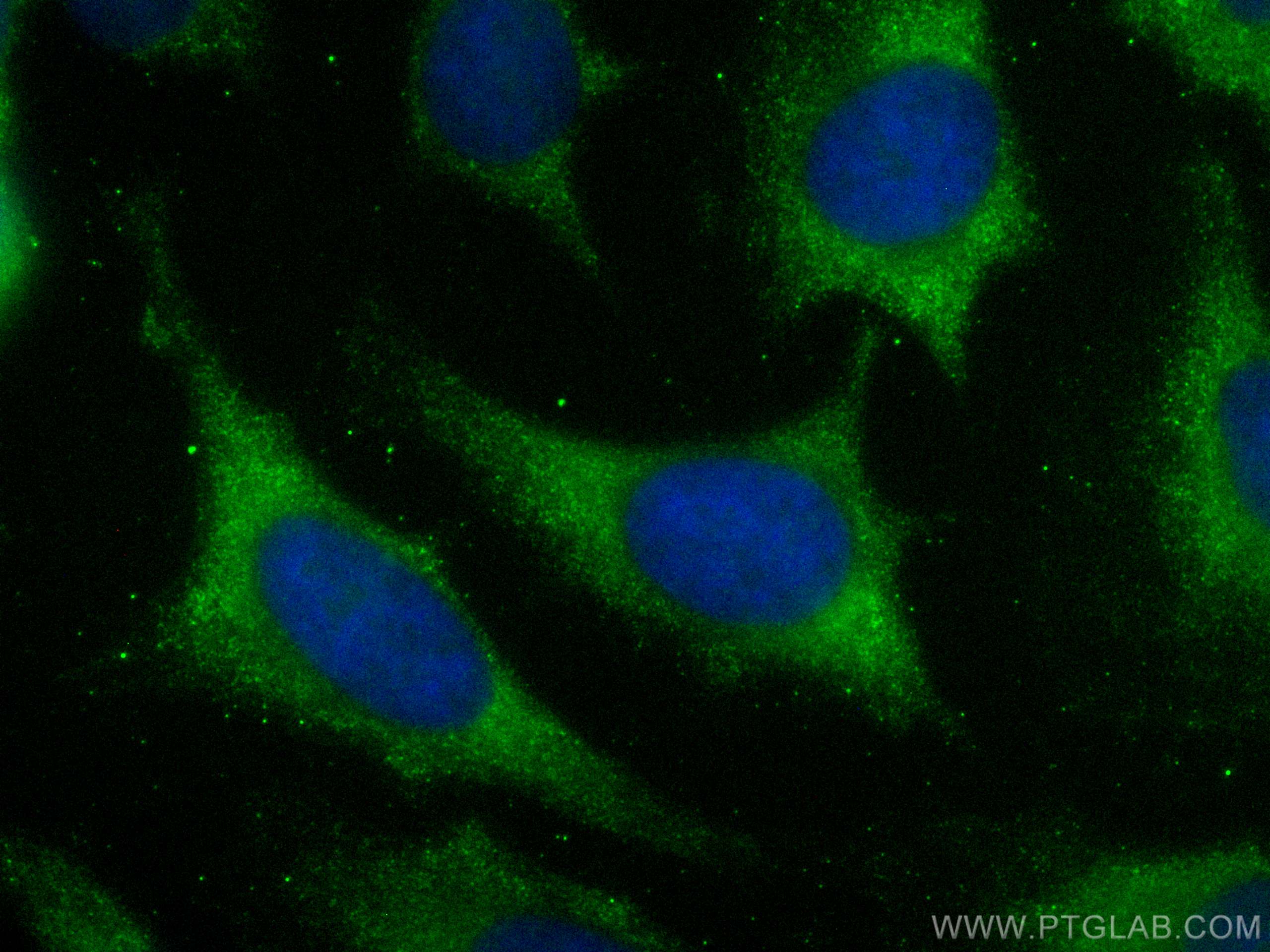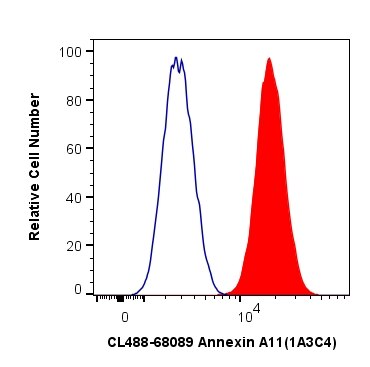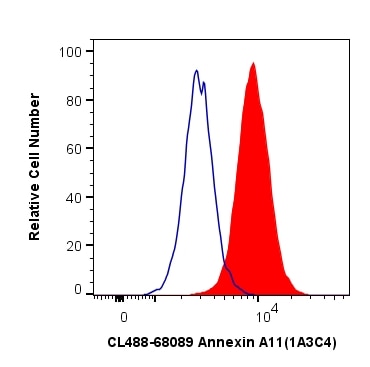Validation Data Gallery
Tested Applications
| Positive IF/ICC detected in | HeLa cells |
| Positive FC (Intra) detected in | HeLa cells, HEK-293T cells |
Recommended dilution
| Application | Dilution |
|---|---|
| Immunofluorescence (IF)/ICC | IF/ICC : 1:50-1:500 |
| Flow Cytometry (FC) (INTRA) | FC (INTRA) : 0.40 ug per 10^6 cells in a 100 µl suspension |
| It is recommended that this reagent should be titrated in each testing system to obtain optimal results. | |
| Sample-dependent, Check data in validation data gallery. | |
Product Information
CL488-68089 targets Annexin A11 in IF/ICC, FC (Intra) applications and shows reactivity with human, mouse, rat, pig, rabbit samples.
| Tested Reactivity | human, mouse, rat, pig, rabbit |
| Host / Isotype | Mouse / IgG1 |
| Class | Monoclonal |
| Type | Antibody |
| Immunogen | Annexin A11 fusion protein Ag31839 相同性解析による交差性が予測される生物種 |
| Full Name | annexin A11 |
| Calculated molecular weight | 56 kDa |
| GenBank accession number | BC007564 |
| Gene Symbol | Annexin A11 |
| Gene ID (NCBI) | 311 |
| RRID | AB_3084395 |
| Conjugate | CoraLite® Plus 488 Fluorescent Dye |
| Excitation/Emission maxima wavelengths | 493 nm / 522 nm |
| Form | Liquid |
| Purification Method | Protein G purification |
| UNIPROT ID | P50995 |
| Storage Buffer | PBS with 50% glycerol, 0.05% Proclin300, 0.5% BSA , pH 7.3 |
| Storage Conditions | Store at -20°C. Avoid exposure to light. Stable for one year after shipment. Aliquoting is unnecessary for -20oC storage. |
Background Information
Annexin A11 (Anxa11) is one member of annexins that are Ca2+-regulated phospholipid-binding proteins. Annexin A11 plays an important role in cell division, differentiation, apoptosis, vesicle trafficking and Ca2+ signaling (PMID: 31610865). ANXA11, an RNA granule-associated phosphoinositide-binding protein, acts as a molecular tether between RNA granules and lysosomes (PMID: 31539493). Annexin A11 dysregulation is involved in the progression, drug-resistance, recurrence of systemic autoimmune disease and cancer. Annexin A11, is involved in a variety of cellular functions including mRNA transport and translation, endocytosis, exocytosis, and plasma membrane repair (PMID: 38896345).
Protocols
| Product Specific Protocols | |
|---|---|
| IF protocol for CL Plus 488 Annexin A11 antibody CL488-68089 | Download protocol |
| FC protocol for CL Plus 488 Annexin A11 antibody CL488-68089 | Download protocol |
| Standard Protocols | |
|---|---|
| Click here to view our Standard Protocols |


